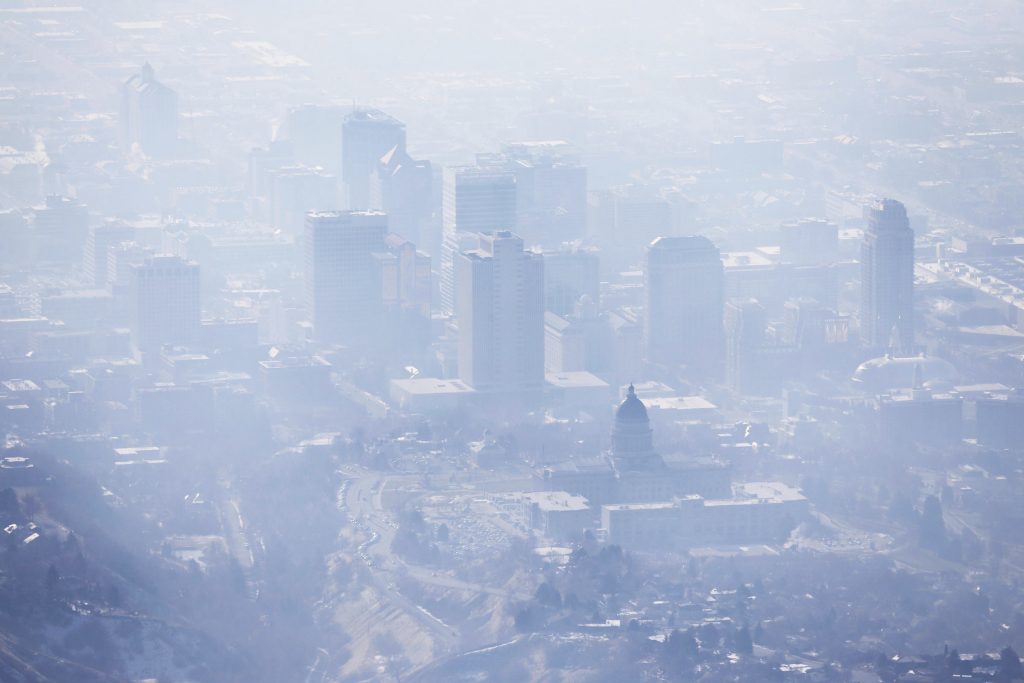
Provo may soon be designated as having improved air quality since meeting the Environmental Protection Agency’s requirements for harmful particulate matter in the air in 2019.
Particulate matter smaller than 2.5 microns, or about 30 times smaller than the width of a human hair, are emitted by sources such as engines and wood-fired stoves, according to the Utah Division of Air Quality 2023 Annual Report. These particles, while small, can harm lungs and are what cause temperature inversion to take on a brown tint in the winter.
Inversion is caused when warm air close to the ground and cold air higher in the atmosphere flip places, causing cold air to be trapped underneath a “lid” of warm air. These conditions reduce the natural mixing of cold and warm air, ensuring pollutants such as particulate matter stay lower, causing unhealthy air quality, according to the Utah Division of Air Quality.
“These particles are so small that they can become embedded in human lung tissue, exacerbating respiratory diseases and cardiovascular problems,” the DAQ report said.
In addition to trapping human-emitted particles and leading to a buildup, the inversion provides ideal circumstances for gases such as sulfur dioxide and ammonia to mix, becoming particulate matter, according to the report.
Provo, along with Salt Lake City and Logan, were classified by the EPA as not attaining particulate matter requirements in 2006. In 2015, Provo and Salt Lake City failed additional requirements, resulting in the areas being classified as “serious nonattainment,” according to the report.
“Mountains can also increase the strength of inversions in the valleys. The Wasatch Mountains, Oquirrh Mountains, and Traverse (Mountains), for example, form a basin that traps cold air in the Salt Lake Valley and shields it from the stronger winds aloft that could clear out inversions,” the website said.
These factors have resulted in Northern Utah, and especially Provo, historically having poor air quality, according to Ned Hill, a board member on the Provo Sustainability and Natural Resources committee. The committee was established in 2011 by former mayor, John Curtis.
“The federal government was looking at the air quality in Utah … and they said, essentially, you got to clean up your air or we will withhold money to redo your freeways,” Hill said.
Along with the committee, Hill has worked with Provo Power, BYU and the Utah Valley Chamber of Commerce to promote initiatives designed to reduce emissions and improve air quality.
These efforts include a rebate program designed to make purchasing electric tools and appliances cheaper when disposing of gas-powered equipment. Provo Power has also worked to provide clean energy.
Through these efforts, Provo has met EPA requirements for particulate matter found in the atmosphere since 2019, according to Bryce Bird, director of the Utah Division of Air Quality.
“As we’re making progress, it’s clear that air quality is better today than it was 10 years ago, 20 … 30 years ago, 40 years ago in Utah County and throughout the state,” Bird said. “The largest source of air pollution is us, and so looking at new technologies, new ways to do things is certainly the best way to keep the air quality so it’s not impacting public health in the future, despite the (population) growth.”
The EPA has not yet designated Provo as having attained particulate matter standards, but, according to the DAQ 2023 report, it is expected soon. Provo has met all requirements given by the EPA for several years.




